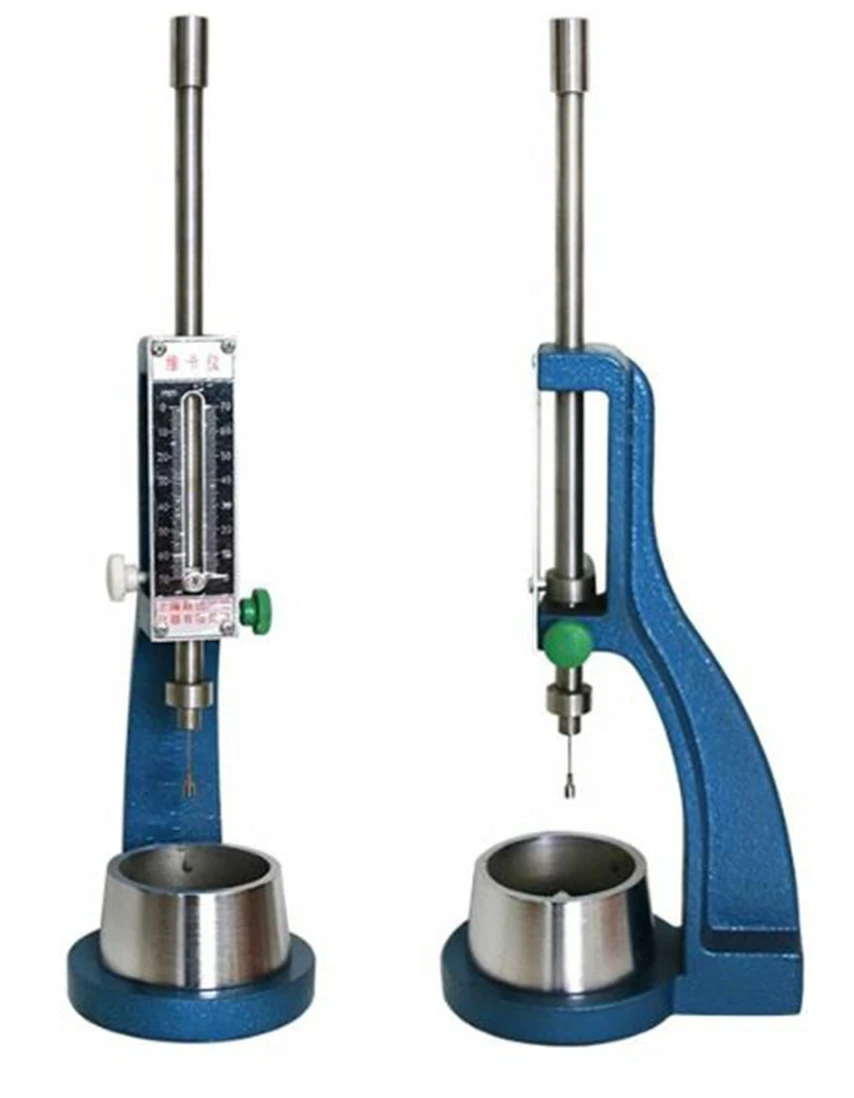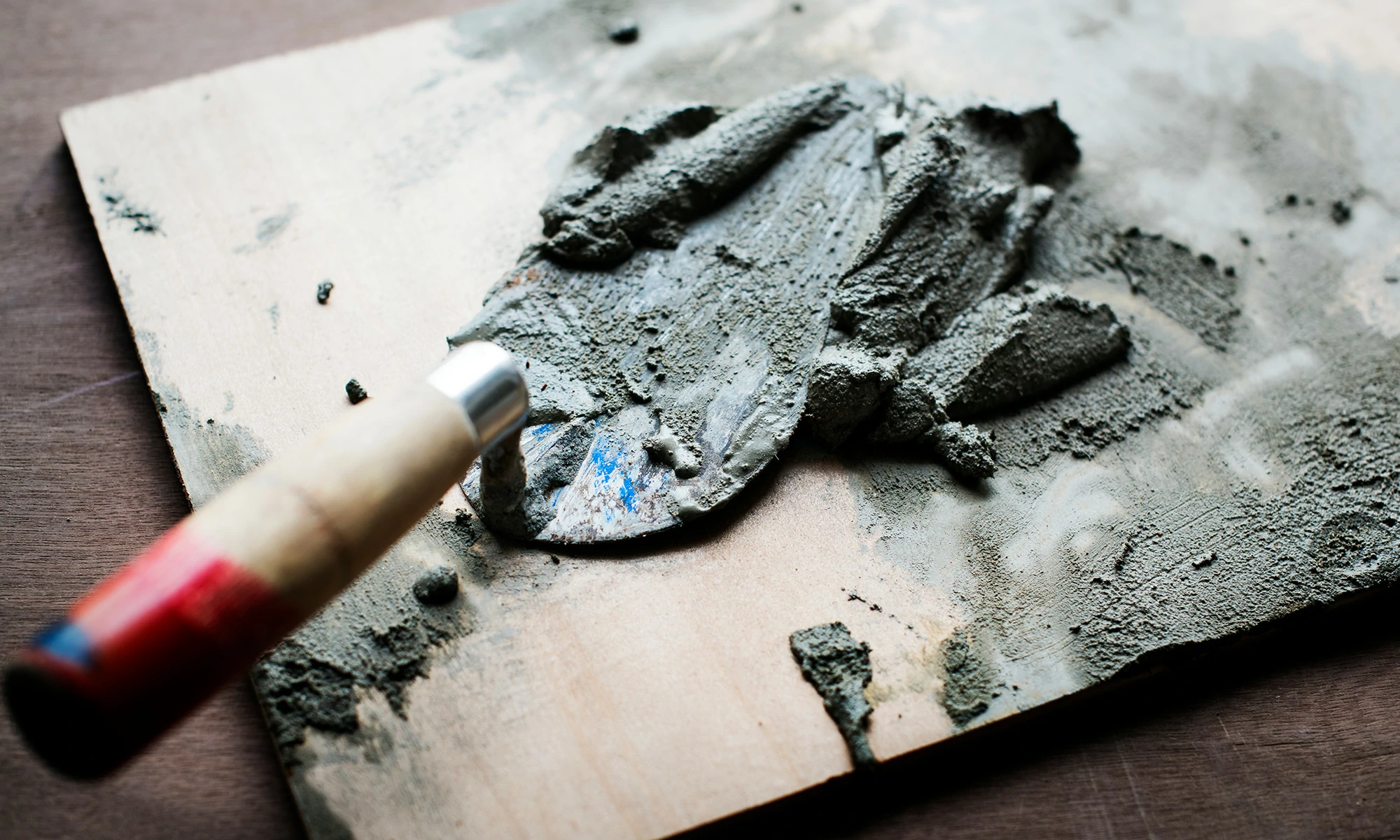The Standard Consistency of cement is a crucial property that defines its workability and handling characteristics. It refers to the percentage of water by weight, added to a cement paste, which results in a standard degree of consistency. Determined through the Vicat apparatus test, the standard consistency is indicative of the optimal water content required for proper cement hydration and setting.
Cement with a standard consistency ensures that it can be easily mixed, placed, and finished during construction activities, striking a balance between fluidity and stability. This parameter is a key quality control measure in the production and application of cement, influencing the material’s performance and the overall success of concrete structures.
Aim:
To determine the standard consistency of cement, initial setting time and final setting time of cement using Vict’s apparatus.
Apparatus and materials:
- Vicat’s apparatus
- bowl
- small trowel
- measuring jar(50ml)
- table clock
- balance
- cement
- water
Vicat’s Apparatus
Vicat’s apparatus consists of a 10 mm diameter plunger and an arrangement to hold two separate needles that drop freely into a mould filled with cement paste. The penetration depth of the bait needle can be determined using a vertical scale from 0 mm to 50 mm. The needle length varies from 40 mm to 50 mm.
Needles
- Needle for Initial Setting Time: The needle has a cross-sectional area of 1 mm2. The end of the needle is flat.
- Needle for Final Setting Time: The needle is circular having a cross-sectional area of 1 mm2. The needle is fitted with a metal attachment. The end of the needle projects beyond the cutting edge of the hollowed-out metal attachment.
- Plunger for Standard Consistency: It is of polished brass 10 ± 0.05 mm in diameter with a projection at the upper end for insertion into the movable rod. The lower end is flat.

Significance and Theory for Standard Consistency of Cement.
The strength of cement depends upon the quality of water mixed with cement. More water reduces the strength of cement while less water in the cement mix leads to incomplete chemical reactions. Hence, the required quantity of water should be added to get the complete strength of cement, which can be determined by a consistency test. In another aspect, ‘cement consistency’ is the easiness with which cement can flow when mixed with water. Directly, the consistency of cement will be a measure of this aspect. The consistency is determined by using Vicat’s apparatus. So, if the cement has required consistency, then the concrete made with it should be easily workable thus requiring less effort to mix it and also producing dense concrete.
The term ‘setting’ is used to describe the stiffening of the cement paste. In other words, the setting refers to a change of state from fluid to rigid one. In practice, mixing ingredients, transportation and placing properly mixed cement will take a certain time and these processes should be completed before the setting process starts. After the stiffening of the cement, the cement starts gaining strength. Since the setting is a continuous process and the difficulties in determining the actual instants of setting actions, in practice, the terms initial and final set are used to describe arbitrarily fixed stages of setting times are defined with reference to Vicat’s apparatus as shown in Figure.
The normal consistency of the cement is the ‘percentage water’ added to the cement such that the depth of penetration of the plunger is between 33-35 mm from the top of the Vicat’s mould. The initial setting time is the period which elapses between the time when water is added to the cement and the thin needle does not penetrate beyond a point of 5mm from the bottom of the mould. The final setting time is the period between the moment water is added to the cement and the needle F makes an impression on the block while the circular attachment of the needle fails to do so.
For most of the commonly used cement, the initial setting time should not be less than 30 minutes and the final setting time should not be more than 60 minutes or 10 hours.
Procedure For Standard Consistency Test
- A frame and a cup are fixed over the top of the vertical rod. The rod weighting 300 mmg carries an indicator which moves on a graduated scale fixed to it and has a hole at its bottom to fix the different needles
- One plunger 10 mm diameter and 50 mm long, needle C with 1 square mm area and 50 mm long and needle F with circular attachment as shown in Figure 1. All these will have a projection at the top fixed into the rod hole.
- A conical mould for cement paste consists of a split ring (diameter 80 mm bottom and height 40 mm) resting non-porous plate generally a glass plate.
- Take 300 g of cement sample in a tray.
- Add 25% of water by the weight of cement to the cement and mix the cement and water thoroughly by hand to become a paste.
- Place the Vicat’s mould with a large end on the non-porous plate and fill the mould with the above-kneaded cement paste till the mould is completely filled. Remove the excess paste from the smaller end of the mould with the help of a trowel in a single stroke
- Put this mould with a glass plate under the frame of the Vicat’s apparatus (with a smaller end of the mould at the top).
- Attach the plunger to the rod. Then the rod is brought in contact with the top surface of the paste and notes down the initial reading of the scale.
- The rod is gently released without any jerk and the penetration is noted. If the rod penetrates by 33 to 35mm from the top, then the paste is said to be of normal consistency.
- Repeat the steps from 2 to 6, till the depth of penetration of the plunger is between 33 to 35mm from the top by varying the percentage of water by weight (by increasing 1-2% at a time)
- When the desired penetration is obtained note down the corresponding percentage of the water by the weight of cement added to the cement. This will be the Normal Consistency of Cement (P in %).
- During the test, the temperature of the room and water should be about 27oC +/- 2oC. The needle should be cleaned every time thoroughly.

Also, read: Storage of Cement at Site Effectively: Best Practices for Storage Duration, Location, and Precautions
Observation and Calculations:
| Sl.No. | Weight of cement in ‘g’ | Weight of water added to cement in ‘g’ and in % | Depth of penetration in ‘mm’ | Remarks |
|---|---|---|---|---|
| 1. | ||||
| 2. | ||||
| 3. | ||||
| 4. | ||||
| 5. | ||||
| 6. |
- Weight of cement taken (g) = _________
- Initial percentage of water added to cement = __________
- Quantity of water added to cement =_______
Points to be Noted
- The time of mixing cement paste is between 3 minutes and 5 minutes. This means the mixing process should not be less than 3 minutes and not exceed 5 minutes. The mixing time is the time between the time of adding water to the dry cement until commencing to fill the mould.
- The test should be conducted at room temperature 27oC +/- 2oC
- No vibration should be allowed on the working table.
- The plunger should be cleaned during every repetition.
Results:
Percentage of water content for standard consistency = ____ %
Also, read: Types of Cement: Grade of Cement and 10 Types
FAQs:
Q: What is the standard consistency of cement?
Ans: The standard consistency of a cement paste is defined as the percentage of water added to 300 gm weights of cement which will permit a Vicat’s plunger having 50 mm length and 10 mm diameter to penetrate in cement paste to a depth of 33-35 mm from the top of the mould.
Q: What is Vicat’s apparatus used for?
Ans: Vicat’s apparatus is used to find out the consistency, initial setting time and final setting time of the cement.
Q: What is Vicat’s apparatus?
Ans: Vicat’s apparatus consists of an arrangement to hold the plunger of 10 mm diameter and two other needles which are made to freely fall into a mould filled with the cement paste. The amount of penetration of the needles of plunder can be noted using vertical graduations from 0 mm to 50 mm. The length of the needle varies from 40 mm to 50 mm.
Q: What should be the Consistency of Cement?
Ans: The standard consistency of cement varies between 25 to 35%. To prepare a mix of cement paste 25-35% water by weight of cement is added to achieve good consistency of cement.
![]()







